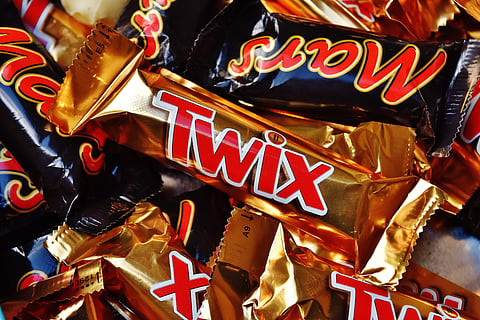

Researchers have found that people judge and make choices about chocolates by their wrapper and packaging design. And what's more? People tend to express a strong emotional association with the cover of the chocolate than with its taste.
The study concluded that while the taste is the predominant factor in determining subsequent purchases, perception of taste is influenced by emotions evoked by packaging. "There's a difference in how consumers perceive intrinsic product cues -- like flavour, aroma, and texture -- which are associated with sensory and perceptual systems, and how they perceive external cues -- like packaging materials, information, brand name, and price -- which are associated with cognitive and psychological mechanisms," explained co-lead investigator Frank R Dunshea, PhD, School of Agriculture and Food, VIC, Australia.
"The information provided via packaging can influence customers' expectations and affect their emotional response when their sensory experience confirms or doesn't confirm their initial impression," continued Dunshea in the study published in the journal, 'Heliyon.' For the study, seventy-five participants (aged 25-55 years old, 59 per cent female) were asked to evaluate chocolates under three conditions: a blind taste test of chocolate, packaging concepts only, and chocolate plus packaging.
The same chocolate was wrapped in six different packaging designs representing bold, fun, every day, special, healthy, and premium concepts. At each step, participants were asked to associate the samples with a lexicon of emotion-based terms. How much participants liked the taste of the chocolates was affected by their expectations based on the different wrapper designs, especially when expectations created by packaging were not met.
Participants selected stronger emotional words to describe the packaging than they did when describing when they blindly tasted the chocolate. The investigators found that there was a moderate positive correlation between liking the packaging and the taste of the chocolate when it was wrapped in packaging described with positive terms such as happy, healthy, fun, bright, relaxing, peace, achievement, togetherness, balance, excitement, and friendship.
Participants' association of positive emotions with the packaging, therefore, had a direct influence on the acceptability of the chocolate. "An estimated 60 per cent of consumers' initial decisions about products are made in stores solely by judging the packaging. As a result," explained co-lead investigator Sigfredo Fuentes, PhD, also of the School of Agriculture and Food, Faculty of Veterinary and Agricultural Sciences, The University of Melbourne, VIC, Australia
